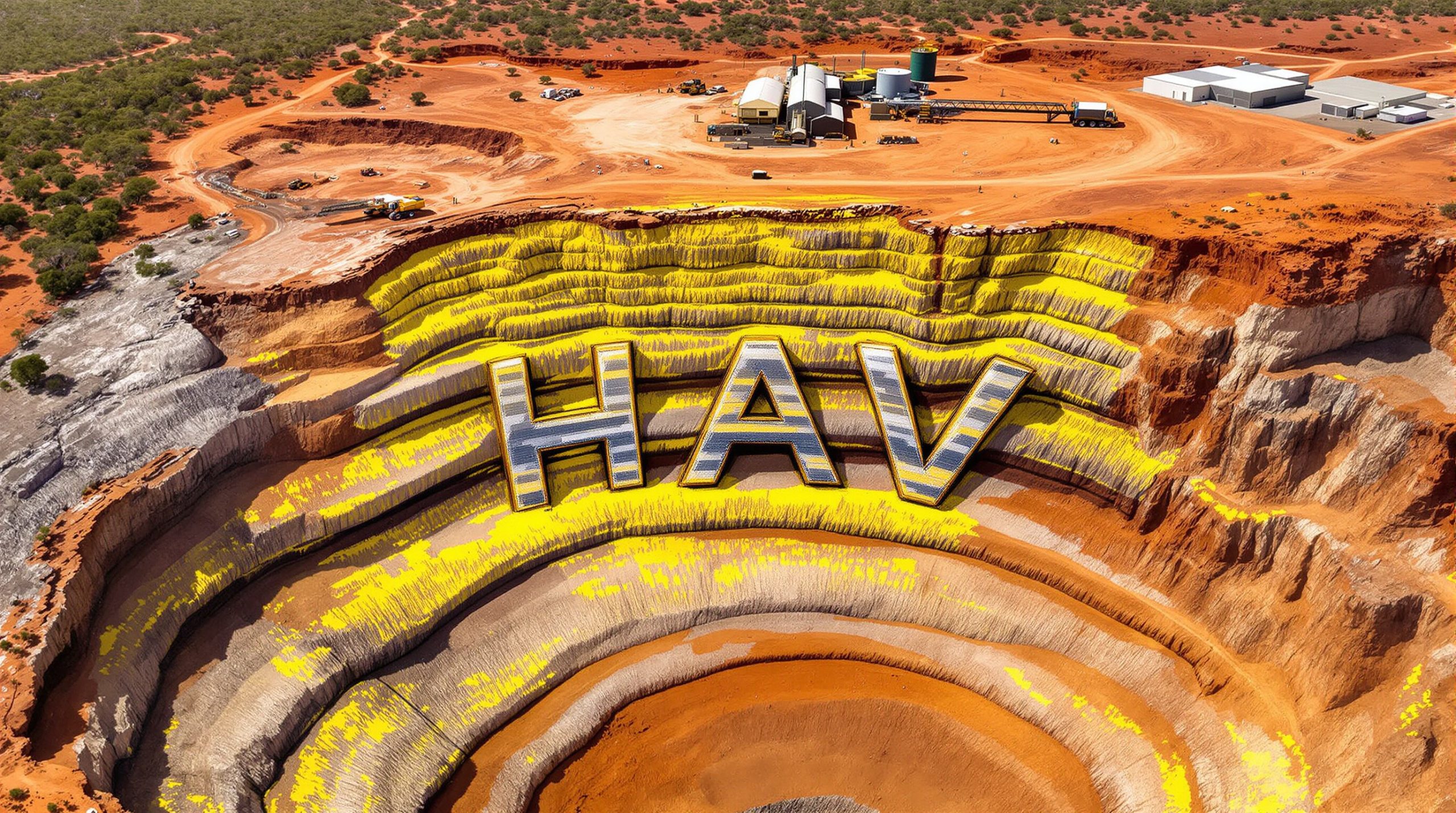Multiple High-Grade PGE Intercepts Strengthen Norseman's Prospectivity
Galileo Mining (ASX: GAL) has announced multiple significant palladium-platinum-gold intersections from its recent aircore drilling program at the Mission Sill prospect within its Norseman Project in Western Australia, enhancing the project's precious metals potential.
The company's August aircore drilling campaign has delivered impressive results, with standout intersections including:
- 4m @ 4.78 g/t 3E (palladium, platinum and gold) from 28m (NAC759) within a broader 52m @ 0.81 g/t 3E zone
- A peak gold assay of 4m @ 3.46 g/t Au (from 28m, NAC759), highlighting the significant precious metal potential
- 4m @ 1.46 g/t 3E from 52m (NAC694) within a broader 43m @ 0.37 g/t 3E intercept
- 15m @ 0.42 g/t 3E from 4m (NAC801) including 3m @ 0.76 g/t 3E from 16m at the end of hole
Most significantly, the Galileo Mining drill results at the Norseman project have defined 10km of continuous PGE anomalism along the Eastern Contact Zone at the Mission Sill prospect, substantially increasing the scale potential of the project.
Strategic Follow-Up Drilling Planned for October
Galileo has scheduled follow-up RC drilling to commence in late October, targeting both the Mission Sill prospect and Callisto Deeps prospect. The company plans to test for bedrock mineralisation along the 10km Eastern Contact target with short, overlapping RC drill holes to determine the location of the ultramafic/mafic contact in basement rock.
"Recent assays from drilling at our Norseman PGE project further demonstrates the prospectivity of the area with consistent PGE anomalism now reported over 10km of strike at the Mission Sill. We are also seeing more significant gold results combined with palladium and platinum along this contact, with up to 3.46g/t gold reported over 4m from shallow depths," commented Managing Director Brad Underwood.
Furthermore, this strategic approach allows Galileo to maximise efficiency while building upon the promising Galileo Mining drill results at the Norseman project revealed in recent campaigns.
Understanding PGE Mineralisation: What Investors Should Know
Platinum Group Elements (PGEs) are rare and valuable metals that include palladium, platinum, rhodium, ruthenium, iridium, and osmium. At Norseman, Galileo is primarily focused on palladium and platinum, along with associated gold mineralisation.
PGEs have critical applications in various industries:
- Automotive sector: Used in catalytic converters to reduce harmful emissions
- Electronics: Important components in hard drives, LCD screens, and various electronic devices
- Fuel cells: Essential for hydrogen fuel cell technology
- Medical applications: Used in cancer treatments and surgical instruments
- Jewellery: Particularly platinum for high-end jewellery
The Mission Sill prospect is particularly significant as it shares the same prospective ultramafic host rocks as the company's 17.5Mt Callisto resource, located approximately 8km away. This geological similarity suggests potential for additional discoveries along the 10km strike length.
Geological Significance of Recent Discoveries
PGE deposits are rare globally, and the Callisto deposit discovered by Galileo in 2022 represents the first deposit of its type identified in Australia, analogous to the Platreef deposits found in South Africa.
In addition, the Galileo Mining drill results at the Norseman project have consistently shown a distinctive mineralisation style that appears to be related to the ultramafic/mafic contact. This geological setting is proving to be remarkably consistent along the 10km strike length identified thus far.
The consistent presence of gold alongside the PGE mineralisation adds another dimension to the economic potential of the project, potentially enhancing overall metal value and providing more flexible development options.
Connection to Existing Callisto Resource
The Mission Sill prospect is located approximately 8km from Galileo's established Callisto resource, which contains:
- 17.5 million tonnes at 1.04g/t 4E (palladium, platinum, gold and rhodium)
- 0.20% nickel and 0.16% copper
- Equivalent to 2.3g/t palladium equivalent or 0.52% nickel equivalent
The connection between Mission Sill and the established Callisto resource is particularly promising, as both areas share the same prospective ultramafic host rocks, suggesting potential for a district-scale mineral system.
However, the recent Galileo Mining drill results at the Norseman project indicate that Mission Sill may have its own distinct characteristics, with potentially higher gold values than observed at Callisto.
EIS Funding Boosts Exploration at Callisto Deeps
Adding to the exploration momentum, Galileo has secured Exploration Incentive Scheme (EIS) funding of up to $180,000 to test for mineralisation directly beneath the Callisto Deposit. This deep drilling will target potential additional mineralised ultramafic sills beneath the established resource.
Initial drilling will utilise RC drilling to test to approximately 600m downhole, with follow-up deep diamond drilling planned based on initial results.
The government support through EIS funding validates the scientific merit of Galileo's exploration approach and provides additional financial flexibility as the company advances multiple targets simultaneously.
Investment Thesis: Why Galileo Mining Deserves Attention
Galileo Mining presents a compelling investment case based on several key factors:
-
Expanding Footprint: The company has now demonstrated 10km of continuous PGE anomalism at Mission Sill, significantly expanding the project's potential scale.
-
Resource Foundation: The established 17.5Mt Callisto resource provides a solid foundation, with Mission Sill potentially adding significant additional mineralisation.
-
Strong Financial Position: The company is well-funded with approximately $10 million cash (as of June 30, 2025) to continue its exploration programs.
-
Strategic Timing: Galileo is exploring for PGEs during a period of renewed market focus on palladium and platinum metals.
-
Multiple Exploration Targets: Beyond Mission Sill and Callisto, the company has identified the Jimberlana South and Mission Sill South prospects, providing multiple potential discovery opportunities.
Why Investors Should Follow Galileo Mining
Galileo Mining represents an attractive opportunity for investors interested in the precious and battery metals space. The company has demonstrated its exploration expertise through the discovery of the Callisto deposit and is now systematically expanding its footprint along the 10km Eastern Contact Zone at Mission Sill.
With a strong cash position of approximately $10 million, Galileo is well-funded to advance its exploration programs, including the upcoming RC drilling campaign scheduled for October.
The company's focus on PGEs is particularly timely given the renewed market interest in these metals, which are critical for catalytic converters and emerging technologies. Additionally, the presence of gold, nickel, and copper in the mineralisation provides valuable by-product potential.
As Galileo advances its exploration at both Mission Sill and Callisto Deeps, investors can anticipate a steady flow of news and potential catalysts in the coming months, making this an opportune time to follow the company's progress.
The Galileo Mining drill results at the Norseman project continue to validate the company's exploration strategy, with each new program building on previous successes and expanding the known mineralised footprint. For those seeking exposure to critical minerals with strong growth potential, Galileo offers a compelling proposition backed by tangible exploration success.
Want to Spot the Next Major Mineral Discovery?
Discovery Alert's proprietary Discovery IQ model delivers real-time notifications when significant mineral discoveries are announced on the ASX, helping investors capitalise on opportunities like Galileo Mining's PGE discoveries. Explore historical examples of exceptional discovery returns at Discovery Alert's discoveries page and position yourself ahead of the market.




